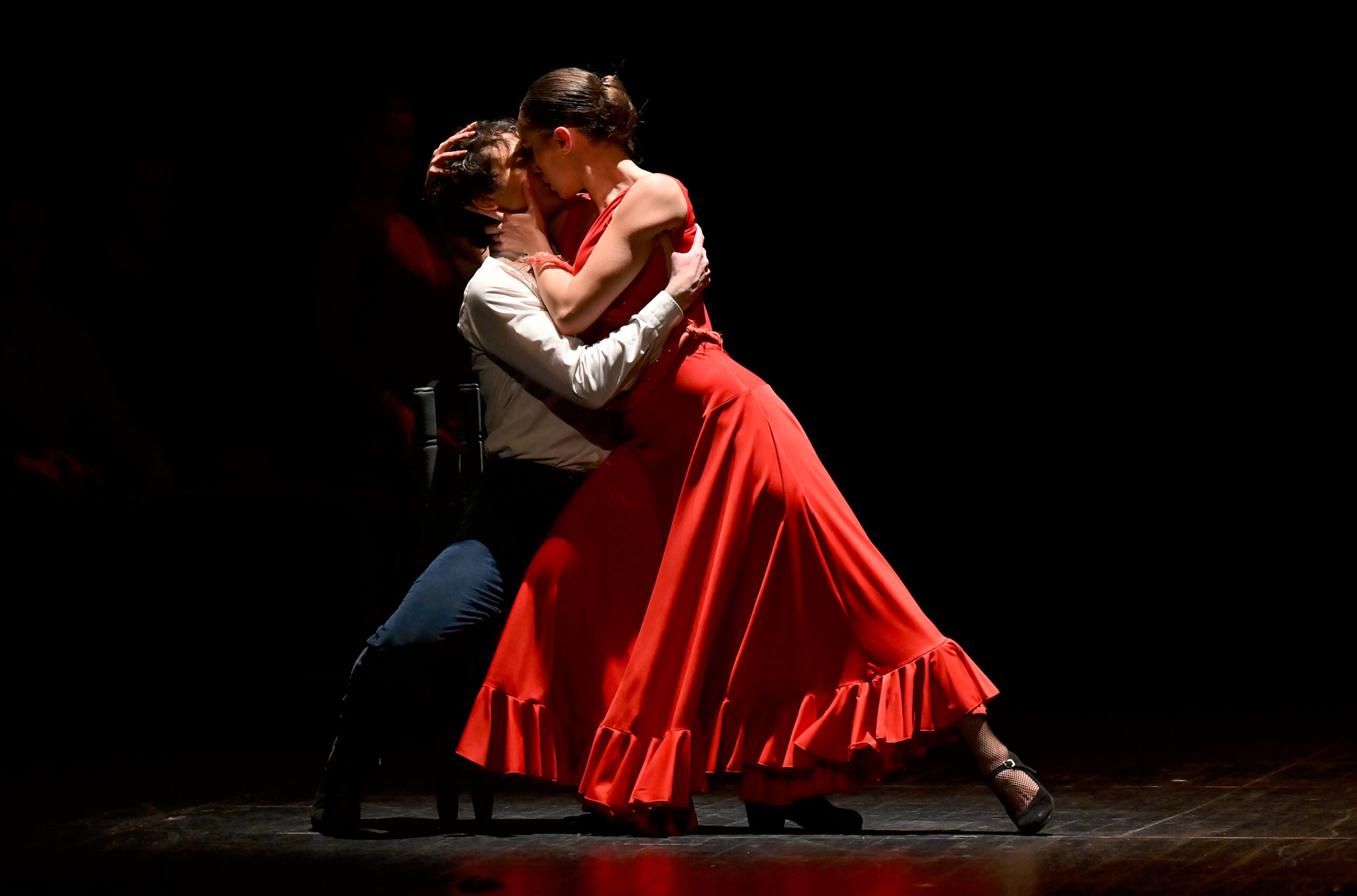1969 he creates the choreography for El Amor Brujo with the Chicago Opera. He performs the ballet in France, Italy, Spain, Japan, the United States, Morocco and Argentina, among other countries, with his own company, the Antonio Gades Ballet.
Cristina Hoyos had already been dancing for a while at festivals and tablaos in Seville and had even toured the United States with Manuela Vargas’s ballet when Antonio Gades saw her perform. Almost immediately, Cristina Hoyos is given a spot in Antonio’s company as the female lead, touring Spain and the world for twenty years (1968-1988).
They receive the Critics Award at the Théâtre des Nations in Paris during the 1968-69 season. In 1970, he presents his show at the Teatro de La Zarzuela in Madrid, dancing opposite Cristina Hoyos and winning the National Theater Prize for Best Ballet; the show is also performed at the Malisso Coliseum in Italy as part of the Festival dei Due Mondi in Spoleto. In 1972 he performs in Finland on his tour of European countries, later returning to America. On his return, in 1973, he films Jaime Camino’s Noche en los jardines de España. He presents his version of Bodas de Sangre at the Teatro de La Zarzuela during the III International Festival of Dance in Madrid, and in 1975, after another American and European tour, announced his retirement.
“… I, like Buñuel, am an atheist by the grace of God”. “We always try, not to do a fun or classical show, but to represent as best as we can the culture of the Andalusian people, framed by some forms of the contemporary approach, because I am not a historian nor a folklorist, but a person who has studied folklore to stage a show, without damaging the image or sense of that culture. I performed Carmen at La Scala in Milan with Mauro Bolognini in 1972, and then again at the Chicago Opera. Man exists because woman exists, just like there is sound because there is silence. I don’t believe in feminism or machismo. I think you have to dance within. The floor should not be stomped. What has the poor floor done to us? I learned a lot from my professors, from my friends, from the people around me. I believed you had to do Spanish dance for Spaniards, not those unworthy imitations for tourists that have warped our taste. I had premiered Bodas de Sangre in 1973, and from there I discovered that I wanted to continue on that path of not making the body happy, but to tell stories, our stories, the ones that come from our culture.
Singer Sarita Montiel returns to Argentina in 1966 and is introduced to the dancer Antonio Gades.
He and his company triumph at the Odeón in Paris in 1970, a success shared with Paco de Lucía on the guitar. In November he launches a tour with El Amor Brujo in Argentina and the Middle East. This show tours Spain in 1971, and several European countries (America, Japan, Iran, Morocco) the following year in and, finally, at the Palau de la Música in Barcelona. On his return he moves to Altea.
In 1971 he separates from his wife, with whom he has two children, and in 1973 he gets together Pepa Flores, with whom he will have three. “La Pepa is a truly wonderful being, how she has raised the girls, that respect, she’s never said anything bad about me. She’s an amazing woman. Hats off”.
He’ll travel the world until 1974, arriving in Rome with his new work: Bodas de Sangre, in its original title, Crónica del suceso de bodas de sangre. Success smiles on him wherever he goes, even in Spain, but Gades announces his withdrawal and dissolves the company. In 1976 he films Dias del pasado with Albert Camus, and except for a trip to Cuba and the United States with Alicia Alonso, he doesn’t dance again.
He presents Bodas de Sangre in Rome in 1974, with music by Emilio de Diego, and also takes the show to Spain.


